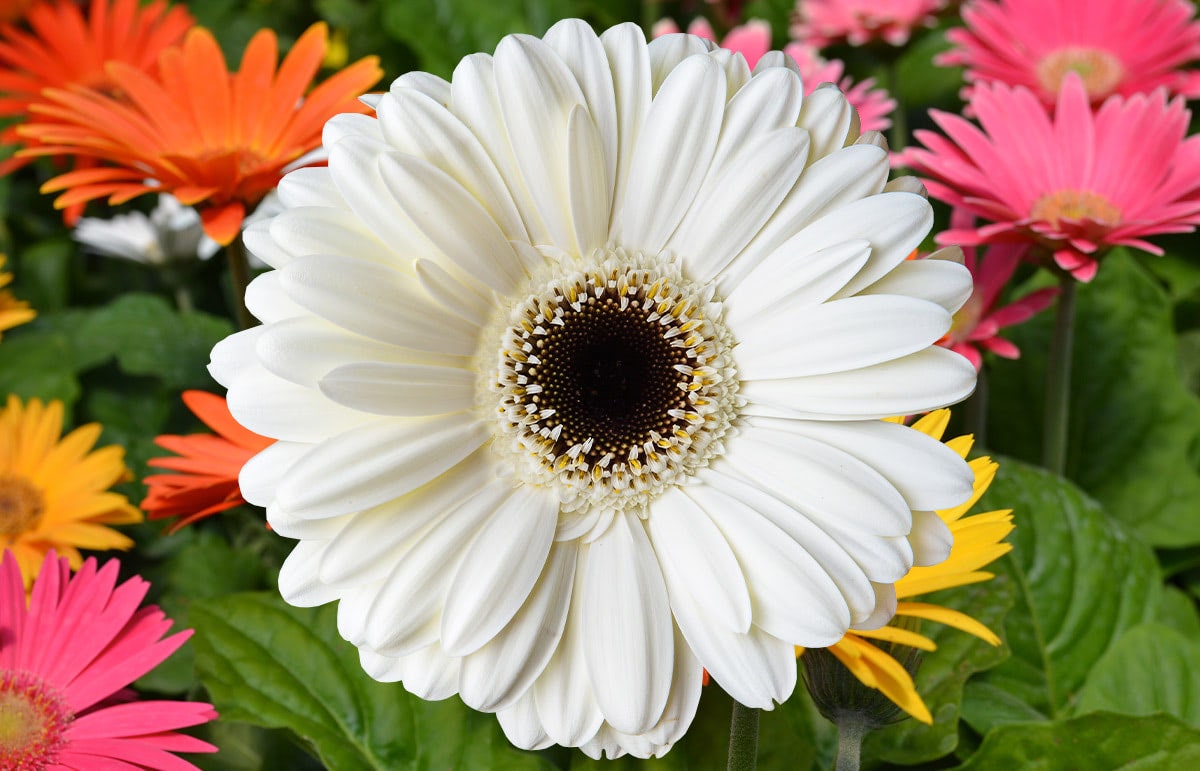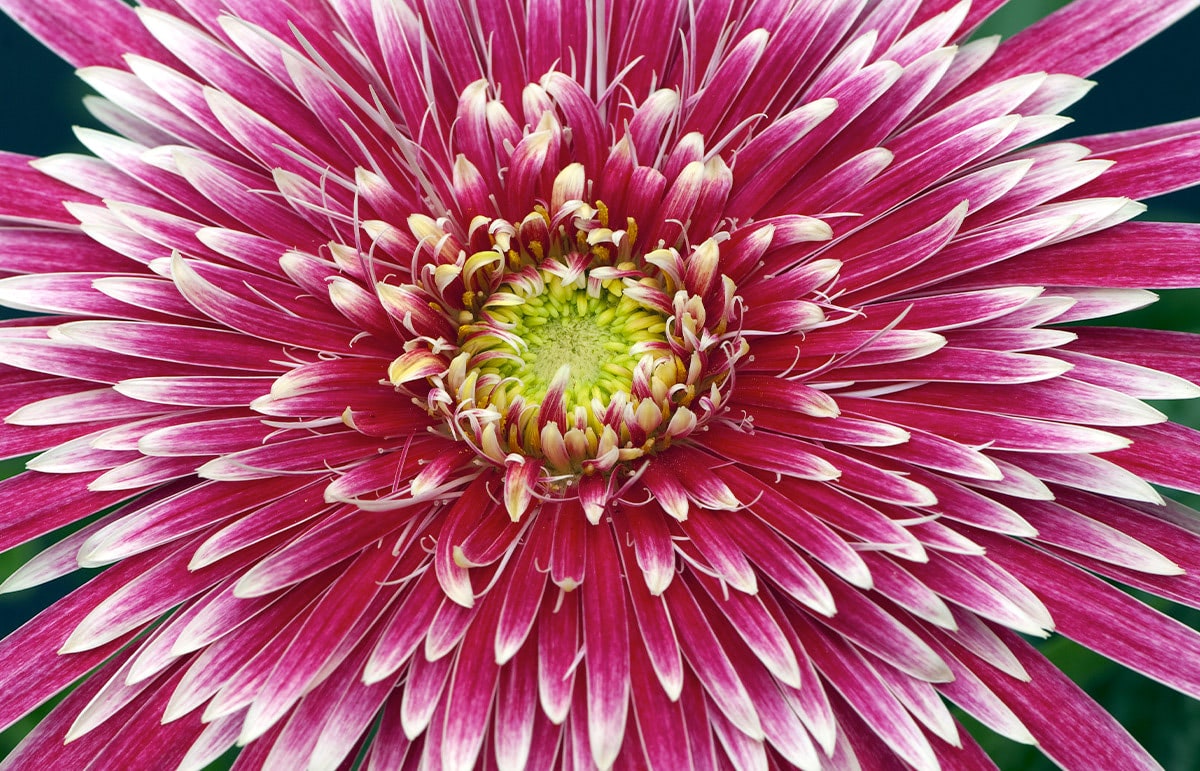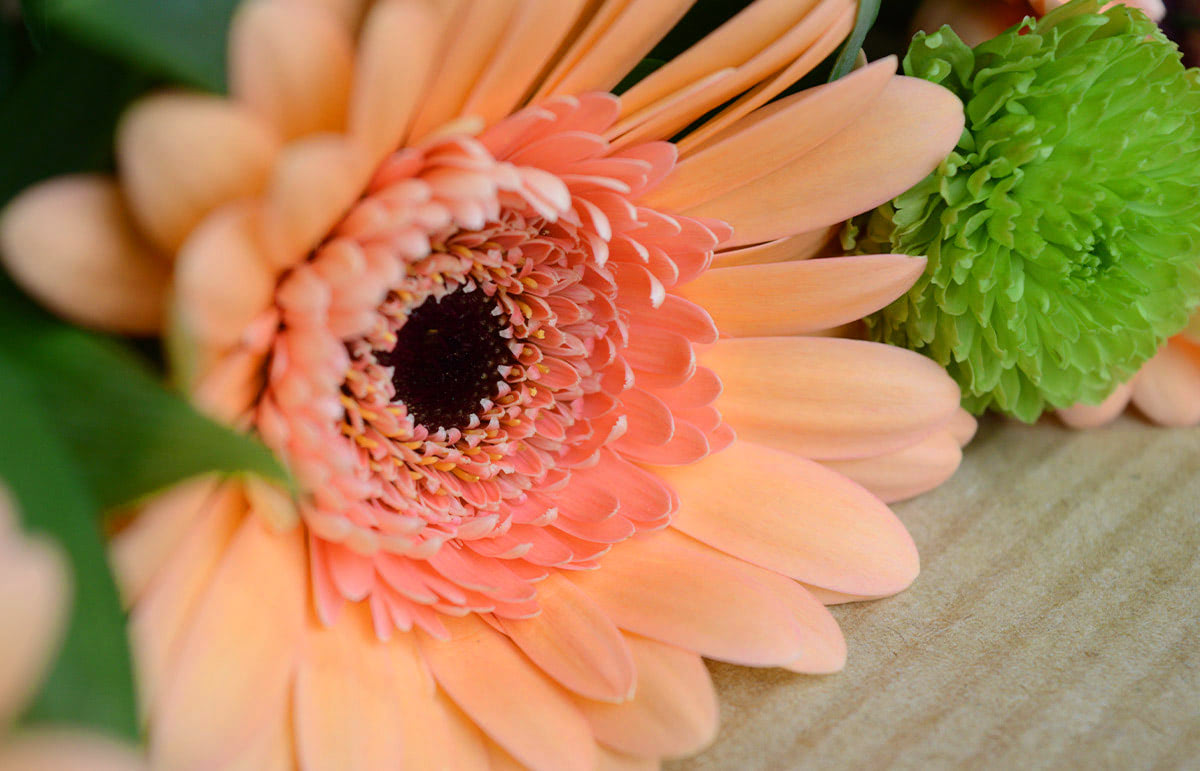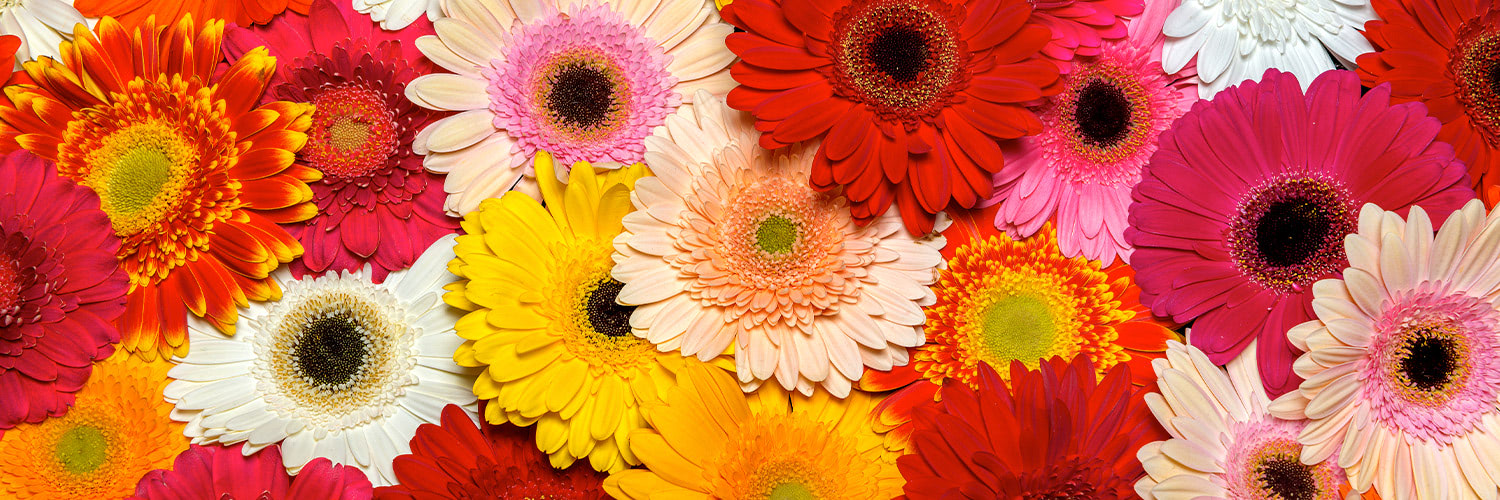
Gerbera daisies are fun and whimsical flowers that begin their long blooming season in March. They make a statement in floral arrangements and decor thanks to their sizable blossoms, vivid colors, and unique patterns that vary from plant to plant. With a little thought, you can integrate these unique flowers into any celebratory space for maximum dramatic impact.

About the Gerbera Daisy
Famous for the bold saturation of color in their petals, gerbera daisies are a member of the Aster family. However, the flowers you find at florists nowadays are almost always a hybrid cultivar. Native to South Africa, these perennials are also related to both marigolds and sunflowers. They are a popular choice in cut flower arrangements thanks to their long blooming period, easy care, and sturdy stems, which hold up to wear and tear.


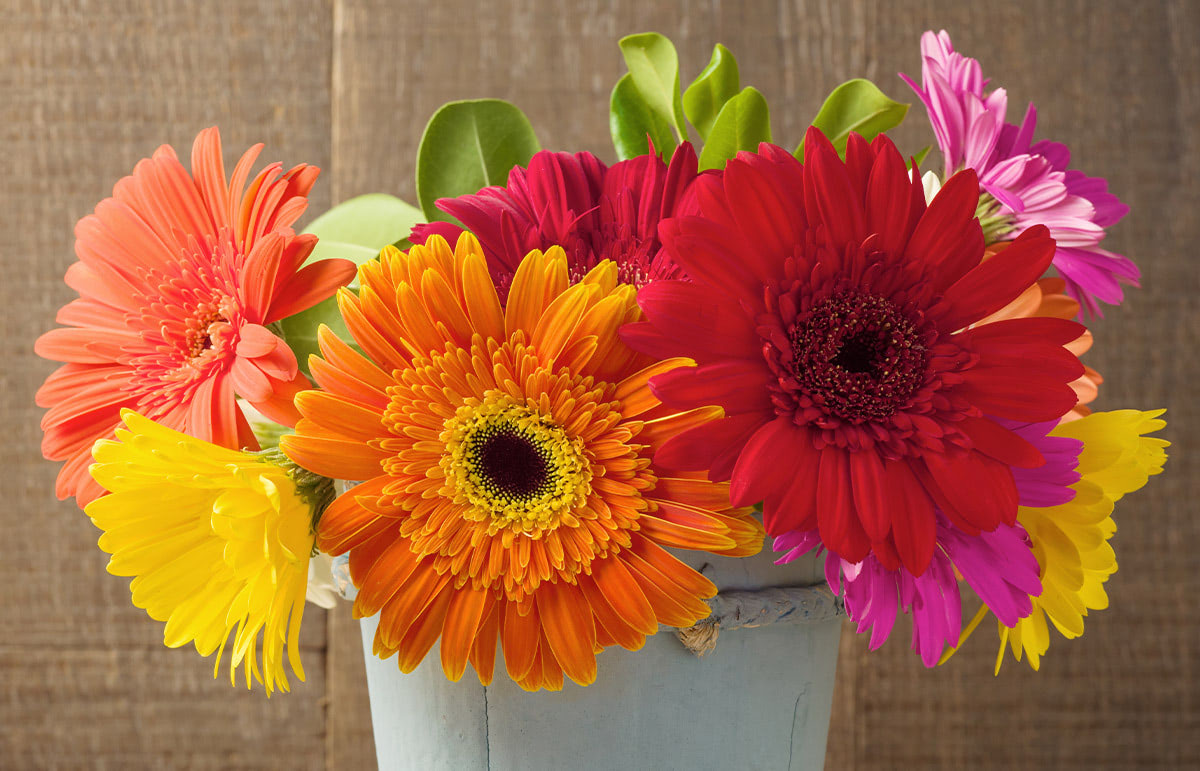

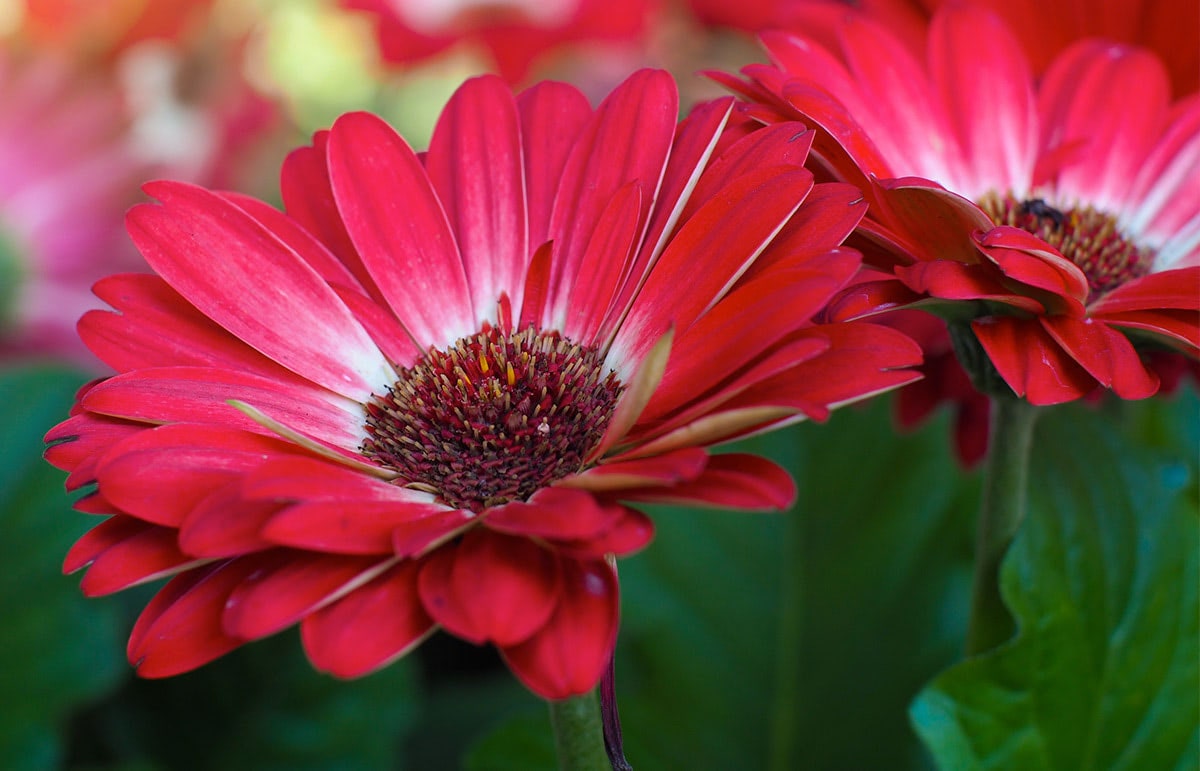
Characteristics of Gerbera Daisy
Gerbera daisies are known for their endurance, both in stem and petal. Blossom color runs the gamut from deep crimson and bright orange to bold gold and pale white, while the size of the flower tends to be between three and four inches. Blooms sit atop a stem with no leaves, usually six inches up from the fuzzy greenery at the base of the plant. The eye in the middle ranges in color from midnight black to pale yellow and is comprised of what look like tiny petals. The four classes of the gerbera daisy are single, semi-double, double, and spider flower; these can influence characteristics such as petal shape, arrangement, and density.
Gerbera Daisy Name Meaning
Gerbera daisies are named after German doctor and botanist Traugott Gerbera, who lived in the 18th century; he was a friend of the "father of modern taxonomy," Carl Linnaeus. Gerbera daisies were discovered by Scotsman Robert Jameson, hence the Latin name: Gerbera jamesonii.
Gerbera Daisy Symbolism
Gerbera daisies are associated with delight, beauty, and cheerfulness. In Egypt, these flowers are significant because of their devotion to the sun.
Fun Facts About the Gerbera Daisy
- Gerbera daisies are available in an extremely broad swath of colors. However, if you come upon these flowers in blue or green shades, they've been enhanced with dye.
- Gerbera daisies weren't cultivated in the United States until after 1920.
- While most flowers absorb carbon monoxide and release oxygen during daylight hours, gerbera daisies undergo this process at night. This makes them an ideal plant to keep in your bedroom to enhance sleep.
- Gerbera daisies are sun-worshippers, so they are prone to bending toward solar rays.
- Gerbera daisies are the national flower for the nation of Eritrea.
- Gerbera daisies are safe for pets as they pose no harm to cats, dogs, and horses.
- To enhance their beauty and help them thrive, gerbera daisies require deadheading once the blossom has faded or dried. Do this by cutting back to the crown of the plant.
Popular Gerbera Daisy Varieties
While there are approximately 30 varieties of gerbera daisies, these are the most popular:
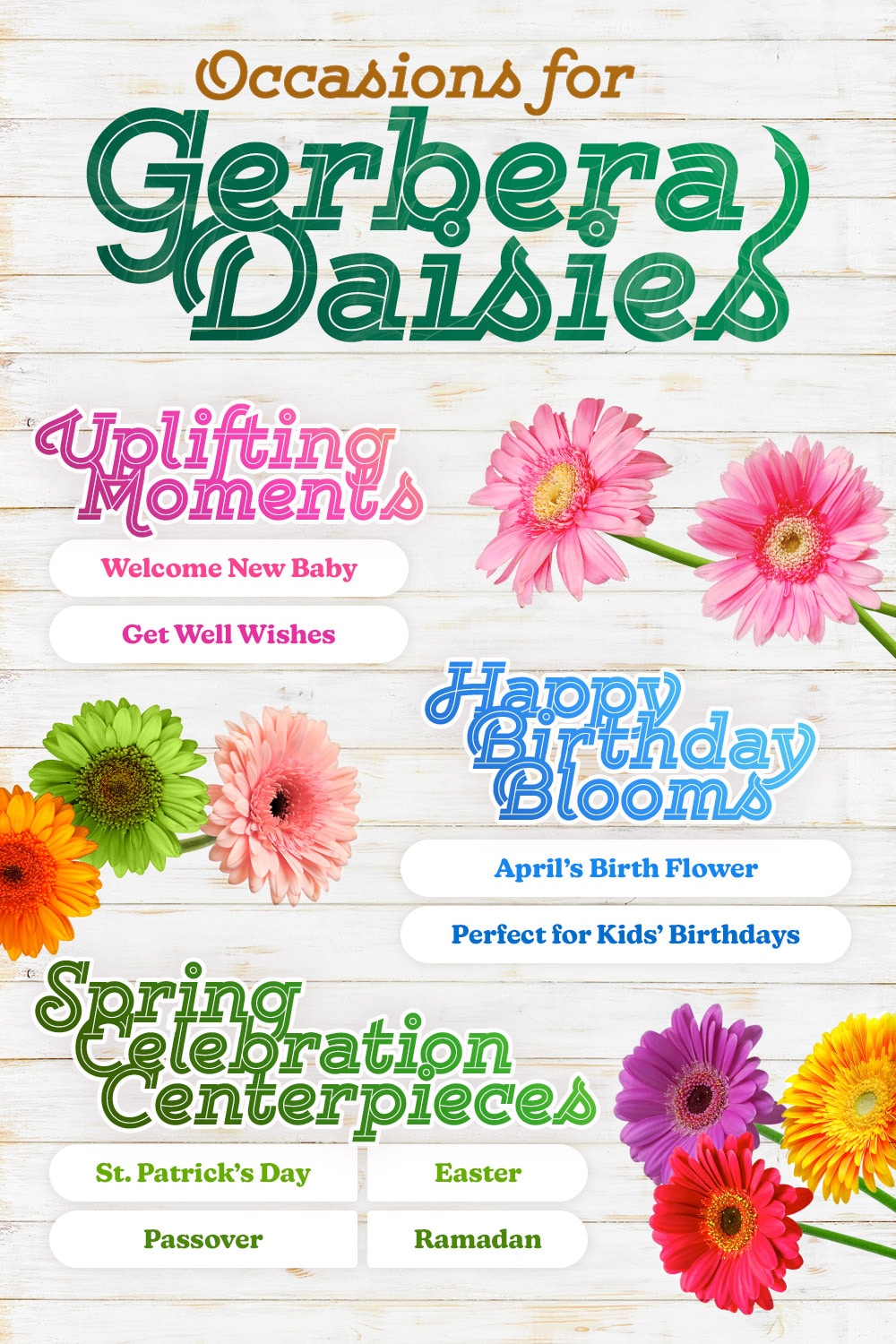
Because of their bright and saturated shades, gerbera daisies are a fantastic option for celebrating a variety of occasions. While cheerful in general, they also symbolize innocence, purity, and beauty. These tenacious bloomers can enhance your décor in arrangements or as standalone blooms in vases.




